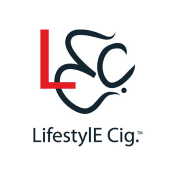





WARNING: Vaping products contain nicotine, a highly addictive chemical.
- Health Canada
AVERTISSEMENT: Les produits de vapotage contiennent de la nicotine. La nicotine crée une forte dépendance.
- Santé Canada
As a member of ECTA, Lifestyle Cig recognizes the need for standards and appropriate testing for E-Liquid. Our eliquids are submitted twice a year for testing with a laboratory compliant with Health Canada testing methods.
Specific Testing Points, Protocols and Tolerance:
As per ECTA’s guidelines, our testing protocol includes testing for the following elements:
| Component / Element |
Protocol MDL* |
Tolerance |
| Nicotine Concentration |
GC/FID Analysis 0.1 mg/ml |
± 10% |
| Diethylene glycol (DG) |
GC/FID Analysis 2.23 µg/ml (ppm) |
< 100 µg/ml (ppm) |
| Acetaldehyde |
HPLC/UV Analysis 0.640 µg/ml (ppm) |
< 100 µg/ml (ppm) |
| Acetoin |
HPLC/UV Analysis 0.841 µg/ml (ppm) |
None Set (Informational) |
| Diacetyl (2,3-Butanedione) |
HPLC/UV Analysis 0.742 µg/ml (ppm) |
Non-Detection Goal
< 22 µg/ml no disclosure
< 100 µg/ml (ppm) disclosure
> 100 µg/ml (ppm) is Fail
|
| Formaldehyde |
HPLC/UV Analysis 0.846 µg/ml (ppm) |
< 30 µg/mL (ppm) |
| Acetyl Propionyl (2,3-Pentanedione) |
HPLC/UV Analysis 0.840 µg/ml (ppm) |
Non-Detection Goal
< 45 µg/ml no disclosure
< 100 µg/ml (ppm) disclosure
> 100 µg/ml (ppm) is Fail
|
| pH Level | Karl Fischer Analysis |
Target Levels (Informational) 5.0 to 8.5 |
| % Water | Karl Fischer Analysis | None Set (Informational) |
| % Propylene glycol (PG) | ± 10% | |
| % Vegetable glycerin (VG) | ± 10% |
* MDL – Method Detection Limit or Level of Detection (LOD). The MDL remains constant with some variation from test to test depending on the calibration of equipment.
The MDL is one of the most critically important aspects of E-Liquid Testing. By way of example: Diacetyl (2,3-Butanedione) and Acetyl Propionyl (2,3-Pentanedione) are common compounds in flavoring that contain certain ketones linked, though not conclusively, to a serious disease “Bronchial Obliterans”, commonly called “Popcorn Lung”. As a minor constituent in flavoring, often undeclared by flavorants manufacturers, it is generally found in very small amounts. Therefore, the most sensitive detection limit is required to either find or rule-out Diacetyl in any commercially marketed eliquid.
The Occupational Safety and Health Administration (OSHA) has not set any “safe exposure limits” for Diacetyl, and permit it’s use in trace quantities in food flavoring. Scientific research is not conclusive, at this time, on whether there are safe limits for inhalation of this chemical (though it is found in larger quantities in tobacco cigarettes, which have not been indicated in or linked to Bronchial Obliterans at this time.
We position Electronic Cigarettes as a Tobacco Harm Reduction tool, so our goal should be to eliminate as many harmful aspects as possible. Tobacco Cigarettes contain Diacetyl in concentrations of 250+ ppm. Therefore, whatever testing protocol is used should be expected to test to well below that level.
Lower caution thresholds registered in the above graphic are given a temporary “pass” with prescribed action required to identify the origin and remove or correct the problem.
ECTA recognizes that flavorant manufacturing companies are not connected to, nor specifically formulating for the E-Liquid industry. The occurrence of Diacetyl and other compounds are viewed differently by this industry for use in foods and beverages. Due to the manufacturing practises of the flavorant industry, it may require additional time to identify potentially harmful compounds, find alternatives and suitable flavorings for inhalation. Testing is a critical component to ensuring we support a process of increasing safety and timely responses to current and future issues. That is the backbone of “harm reduction”.
NOTE: These standards do not reflect a stance of “these standards make E-Liquid safe”. Electronic Cigarettes are not safe in absolute terms, (nor would that be possible) with these standards, or any other known standard. Our goal by using this standard of testing is for them to be “safer” and to continue to become safer for everyone as the industry moves forward.